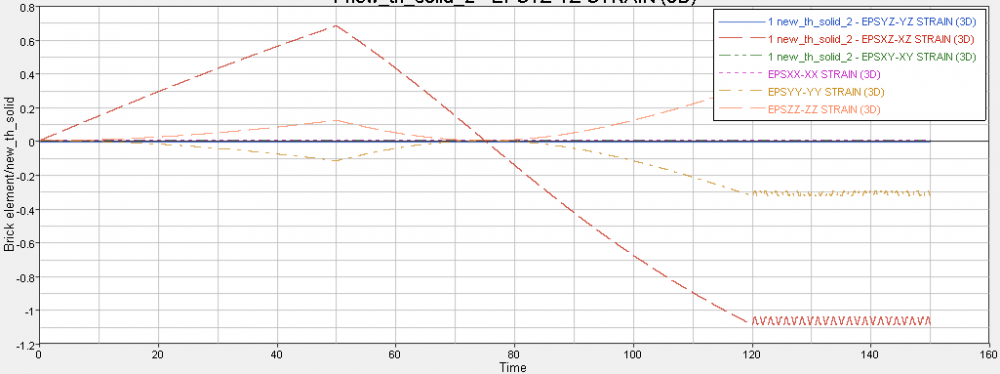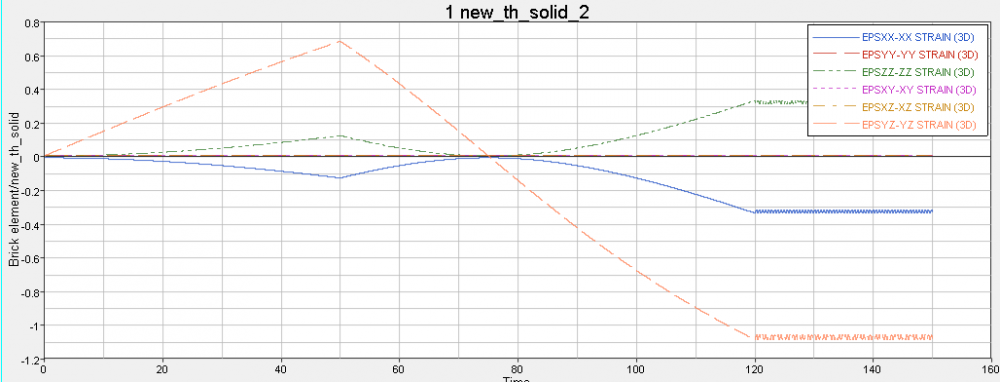Hello everyone,
Please see the attached images. The RADIOSS solver is giving;
- a strain in Y direction (unexpected) when the model is sheared in XZ direction
- a strain in X direction (unexpected) when the model is sheared in YZ direction
Has anyone already faced such an issue?
Do you have an idea what's happening here?
Best regards,
Sushant
<?xml version="1.0" encoding="UTF-8"?>
<?xml version="1.0" encoding="UTF-8"?>